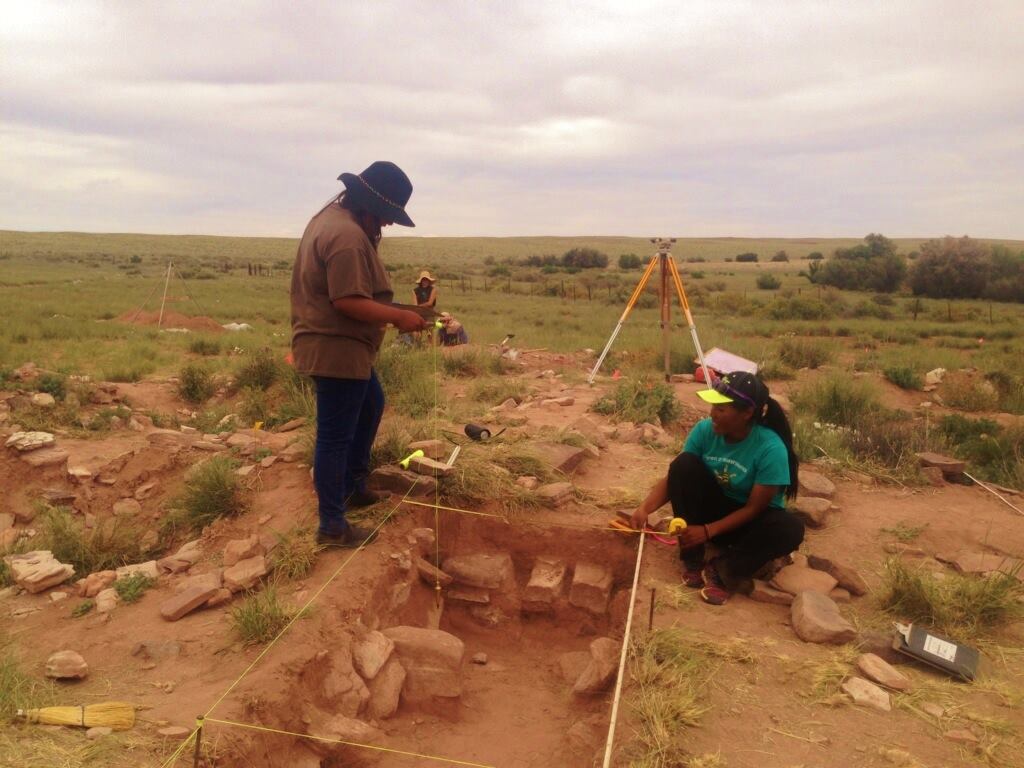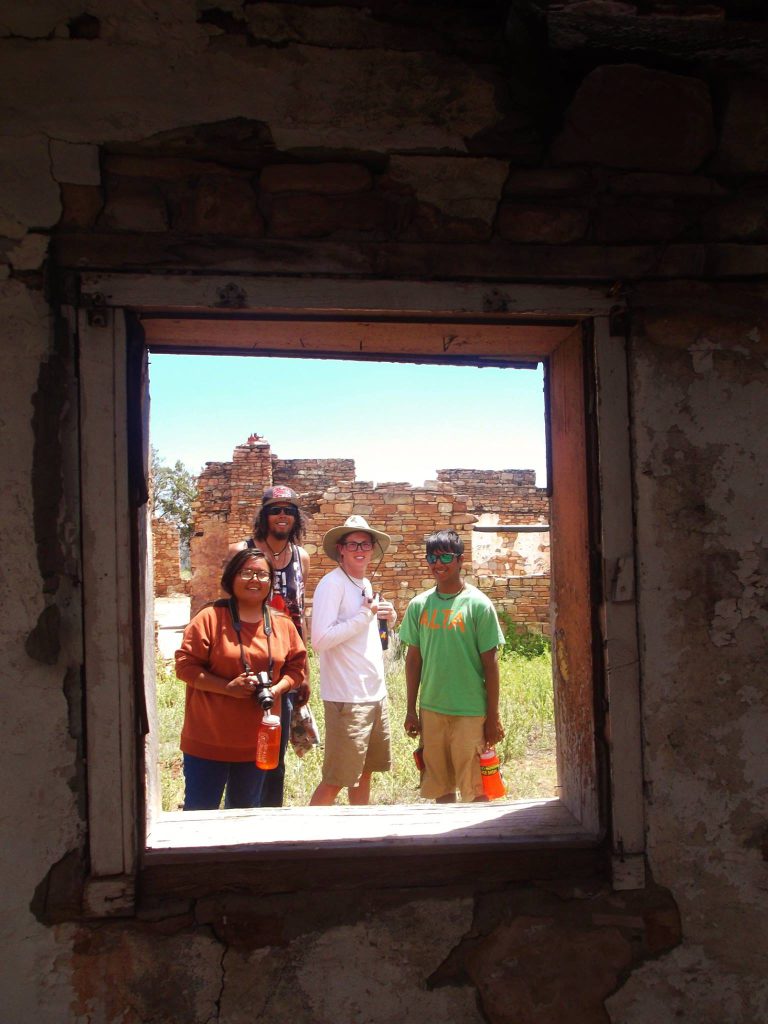Confronting Cultural Imperialism in Native American Archaeology

Back in 2003, not long after I started teaching anthropology and archaeology at Fort Lewis College in Durango, Colorado, a young Lakota student asked me a question: “Why do archaeologists think they have the right to tell me about my own history?” I don’t recall the answer I gave, nor do I suspect that it was at all adequate, but in the intervening years, I have held on to this question.
Anyone familiar with the history of American archaeology knows that the relationship between archaeologists and Native Americans has been an uneasy one. Against a backdrop of government-sanctioned genocide, the schism was reinforced in the late 19th and early 20th centuries by dramatically different views of human remains. In places like Egypt, Mesopotamia, and Greece, by contrast, the dominant colonial powers shared a similar view of burials and the afterlife as the descendants of the ancient ones who had created what existed in the archaeological record. In the Americas, the situation was quite different. Not only did descendant communities have dramatically different worldviews than the colonial authorities, but the dominant culture largely viewed Native Americans as subhuman, to be objectified and eradicated. Western beliefs about burials, the afterlife, and the scientific imperative were uncritically applied to archaeological fieldwork.
In 1990, there was a major shift in how archaeology was conducted in the United States with the passage of the Native American Graves Protection and Repatriation Act, or NAGPRA. This critical human rights law forced some archaeologists into direct consultation with Indian tribes, Native American lineal descendants, and Native Hawaiian organizations regarding the proper disposition of Native American human remains and cultural items curated in federally funded museums throughout the United States. It also created a process requiring tribal consultation for archaeological projects done in advance of construction and development on federal or tribal lands.
Sadly, in spite of NAGPRA and more than 25 years of consultation, archaeologists are still widely distrusted in Native American communities. My predecessors’ transgressions are still remembered in many of my students’ homes and communities. The reputation our field has for “grave robbing” and for unrestrained scientific curiosity persists among the descendants of those whose lives we attempt to study through the archaeological record.
Prior to my teaching career at Fort Lewis College—an institution whose student population is about 30 percent Native American—I found it easy to dismiss such concerns. Once, when I was attending a conference in New Mexico, I was walking down the street with a group of archaeologists, and each of us was still wearing our conference nametag. As we walked along, two men passed us, and I heard one say, “Hey look, there goes one of those grave robbers.” At the time, I simply ignored the comment, privately thankful for the fact that I personally had not been guilty of this accusation—every burial excavation I have ever worked on was conducted in consultation with Native Americans and only occurred because the graves were threatened by development.
But today, after some 15 years spent interacting with Native American students, I find that these types of comments cannot be so easily dismissed. I can no longer ignore the truth behind them, and instead have chosen to tackle the issues head-on.
After many lively classroom discussions over the years, I have reached the conclusion that American archaeology has more to offer Native Americans than it does Euro-Americans. What was once an instrument of oppression now seems to me to be an instrument of self-determination.
Native Americans have rich oral traditions that recount their movement around ancestral homelands. Although historically they produced no written record of these events, as Western society has, they left thousands of archaeological sites all over the Americas. The Hopi call their ancestral sites “footprints.” Such places document Native American history more effectively than any textbook. I view it as my obligation to make these footprints more accessible and relevant to Native American students through classes and seminars on everything from archaeological investigations to ethics and resource management laws.
The classroom, however, is just a starting point. Archaeologists like myself have an ethical responsibility to work alongside descendant communities to protect their cultural heritage from the forces of unchecked greed and cultural imperialism. But so does the public at large. The long effort to either commit genocide on Native Americans or assimilate them has included the destruction of thousands of their ancestral sites. And while it’s true that the U.S. government has enacted laws protecting these places on public lands—or wherever federal money is being used for development—we have seen time and again that these laws often fail to serve their intended purpose.
Recent protests over the Dakota Access pipeline are but one highly publicized example of how corporate greed has justified the destruction of ancestral landscapes, in spite of laws that were intended to protect such places. All of us can and should do our part to help break this cycle. We can make a difference by changing our way of thinking about archaeological resources. We need to view them not as curiosities, but as tangible reminders of living communities both past and present. We can also make more tangible contributions by advocating for the protection of archaeological resources through activism or through donations to organizations that protect archaeological sites or promote Native American leadership in archaeology like the Archaeological Conservancy or the Society for American Archaeology’s Native American Scholarships Fund.
When irreplaceable sites are destroyed outside of the consultation process, we need to cultivate the same outrage we felt when we saw extremist groups destroy World Heritage monuments, such as Palmyra in Syria or the Bamiyan Buddhas in Afghanistan. Although those cases were more overt, the result is no different: oppression by means of the erasure of cultural heritage. By making archaeology accessible, I aim to cultivate a sense of outrage that will hopefully be channeled into effective activism that is grounded in law.
Considering our ethical responsibility to engage with Native Americans, I consider myself fortunate to work with a large and diverse group of Native students. As I write this, I am conducting fieldwork in southwestern Colorado with a crew comprised of both non-Native and Native students; the Native participants represent the Blackfeet, Osage, and Potawatomi nations. In previous years, the Fort Lewis College Archaeological Field School hosted students from Navajo, Yup’ik, Tlingit, Hopi, Hualapai, and Southern Ute communities. Many of our Native students will go on to work for their tribes and hopefully will provide a different perspective on what contemporary archaeology in the United States is all about.
One of my former students currently works for the Navajo Nation Heritage and Historic Preservation Department. When he was a student, he would often tell me how difficult it was for him to live in two worlds—as a student of archaeology and as a Navajo raised in a traditional household. Even today, after years of working as a Native American archaeologist, he continues to grapple with this dual identity. It is my fervent hope that one day there will be no need for people like him to feel torn between two worlds. It is worth mentioning too that there are already many professional Native archaeologists who are doing a lot of excellent work to bridge the gap.
The question from my student back in 2003 was by no means my first introduction to these issues, but it was the first time that I felt personally accountable. More than a decade later, I feel better equipped to answer her query. When a student asks me why archaeologists think they have the right to teach her about her history, I respond by saying that they don’t have that right. But we do have an obligation, along with the rest of society, to help Native Americans document their ancestral footprints and to protect their threatened heritage.

































